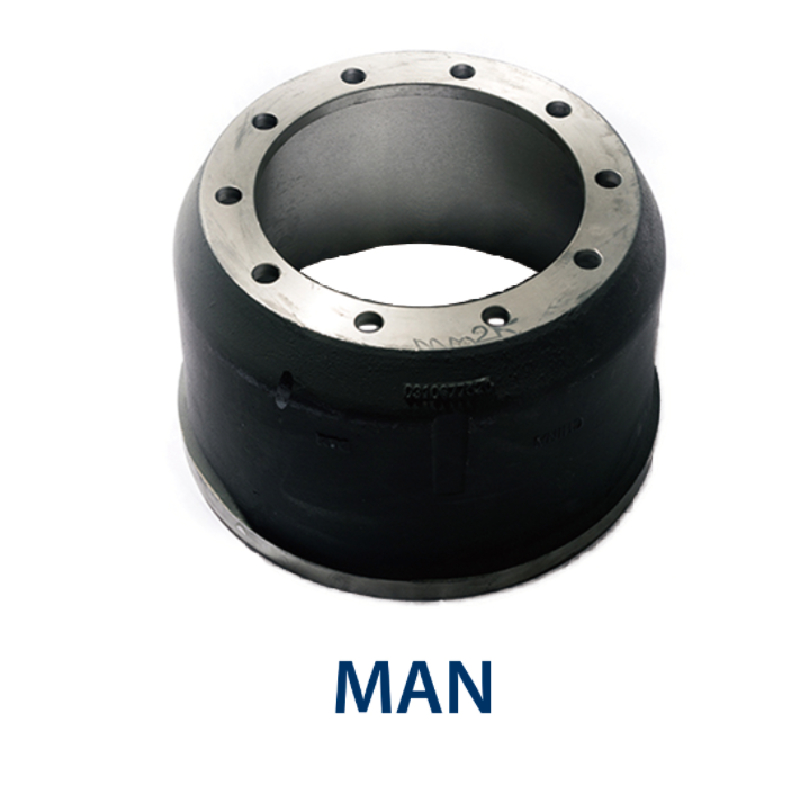ಡಿಸೆ . 30, 2024 04:56 Back to list
front brake drums
Understanding Front Brake Drums An Essential Component of Vehicle Safety
When it comes to vehicle safety, the braking system stands out as one of the most crucial components. Among the various elements that contribute to effective braking, front brake drums play a significant role, especially in older vehicles and some modern designs. In this article, we will explore what front brake drums are, how they function, their advantages and disadvantages, and the importance of proper maintenance.
What Are Front Brake Drums?
Brake drums are part of a drum brake system, which uses friction to slow down or stop the motion of a vehicle. Unlike disc brakes, where the brake pads squeeze against a rotating disc to create friction, drum brakes use a cylindrical drum that rotates with the wheel. Inside the drum, brake shoes expand outward against the inner surface of the drum when the brakes are applied, generating the friction needed to slow down the vehicle.
Typically made from cast iron or aluminum, front brake drums are designed to withstand significant heat and wear. They also tend to be larger in size compared to rear brake drums, as the front of a vehicle typically bears more weight during braking due to weight transfer.
How Do Front Brake Drums Function?
The operation of front brake drums begins when the driver presses the brake pedal. This action activates the brake master cylinder, which sends hydraulic fluid to the brake lines. The fluid pressure forces the brake shoes outward against the inner surface of the drum. This contact generates friction, which in turn slows the rotation of the wheel, ultimately stopping the vehicle.
One of the advantages of drum brakes is their ability to provide significant stopping power, particularly in low-speed situations. They are also self-energizing, meaning that when the brakes are applied, the rotation of the drum helps to pull the shoes against the drum surface, enhancing their braking effectiveness.
Advantages of Front Brake Drums
1. Cost-Effective Drum brakes are generally cheaper to manufacture and replace compared to disc brakes. They often come as standard equipment on more budget-friendly vehicles.
front brake drums

3. Less Susceptible to Water Drum brakes are less exposed to the elements compared to disc brakes, which may make them less prone to issues associated with water, such as reduced friction and performance.
Disadvantages of Front Brake Drums
1. Heat Dissipation One of the most significant drawbacks of drum brakes is their ability to dissipate heat. Under heavy braking conditions, such as during a long downhill drive or spirited driving, drum brakes can overheat, leading to brake fade—a reduction in stopping power.
2. More Complex Maintenance Drum brakes can be more challenging to service than disc brakes. The design often requires the removal of the wheel and drum to access and replace worn components, which can be time-consuming.
3. Slower Response Times Compared to disc brakes, drum brakes may have slower response times, particularly when exposed to extreme conditions. This can be a critical drawback for modern vehicles that demand quick braking responses.
Maintenance and Care
Maintaining front brake drums is essential for safe driving. Regular inspections should be carried out to check for signs of wear, such as grooves on the drum surface or worn brake shoes. Additionally, it’s crucial to ensure that the braking system is free from debris and that all components are properly lubricated and adjusted.
Proper maintenance can extend the lifespan of brake drums and ensure optimal performance. Replacing worn components proactively can enhance vehicle safety and efficiency.
Conclusion
In summary, front brake drums are a vital component of a vehicle's braking system. While they have their advantages, such as cost-effectiveness and a degree of resistance to water, they also come with disadvantages including heat dissipation issues and complex maintenance needs. Whether you own a classic car with a classic drum setup or a more modern vehicle, understanding the function and maintenance of front brake drums is key to ensuring safety on the road. Regular inspections and prompt repairs can contribute significantly to a safer driving experience.
-
HINO Industrial Solutions - ¡Ң���ຽ��е��������˾ | Advanced Efficiency&Customization
NewsJul.13,2025
-
HINO Industrial Efficiency Solutions - ¡Ң���ຽ��е��������˾
NewsJul.13,2025
-
HINO Industrial Solutions - ¡Ң���ຽ��е��������˾ | Advanced Technology&Reliability
NewsJul.13,2025
-
HINO Industrial Efficiency-Jiangsu Hino Industrial|Productivity Optimization&Cost Reduction
NewsJul.12,2025
-
HINO-¡Ң���ຽ��е��������˾|Advanced Industrial Solutions&Energy Efficiency
NewsJul.12,2025
-
Premium Brake Drum Iveco – Durable Drum Brake Drum & Brake Shoe Solutions
NewsJul.08,2025
